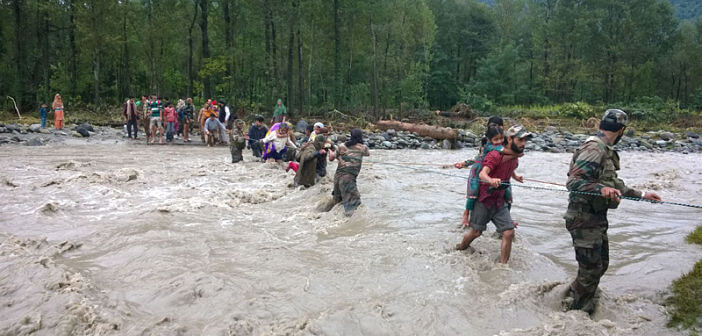India’s disasters and its disaster management

India has seen many disasters, some of which were natural, some were man-made and some were a combination of both. No matter what the nature of the disasters are, the damages caused by these disasters are devastating – from loss of human lives to loss of livestock to destruction of property to health crises. This list gives the disasters since 1972 along with the devastation they have caused. A total of 19 major disasters occurred from 1972 to 2012. The number of major disasters decade wise and also the type of disasters is explained in the charts below.
[orc]Note: At the time of compiling this report, the latest data on disaster was available only as of 2013.
Climate change is indeed showing its impact with majority disasters because of floods & cyclones. With every passing decade, the number of major disasters is increasing.
Economic loss
The economic loss due to these major disasters is only available from the 1990s and the loss has been ever increasing. In terms of annual financial losses, it is about 2% of the GDP.
Vulnerability to Disasters
India is vulnerable in varying degrees to a large number of natural as well as man-made disasters.
- Over 40 million hectares (12 per cent of land) is prone to floods and river erosion
- 58.6 per cent of the landmass is prone to earthquakes of moderate to very high intensity
- Of the 7,516 km long coastline, close to 5,700 km is prone to cyclones and tsunamis
- 68 per cent of the cultivable area is vulnerable to drought and hilly areas are at risk from landslides and avalanches
- Further, the vulnerability to Nuclear, Biological and Chemical (NBC) disasters and terrorism has also increased.
Impact of Climate Change
Climate change is also one of the reasons for the disasters such as untimely floods, the devastating cyclones and this phenomenon is now very much evident in India.
- Increasing trends in mean temperature (0.50 to 0.80 C)
- Diurnal Temperature Range increasing
- More Heat Waves
- Drought in some regions
- Increased frequency & intensity of precipitation
- Glacial retreats /Glacial Lake outburst Floods (GLOFs)
- Sea level rise /Increase in Intensity of very strong Cyclones
- Adverse impact on Agriculture & Horticulture, Forestry & bio diversity, Human/ Animal health
- Glaciers in Himalayan region receding @ 16 mts per year
Disaster Management
After 1998, there has been a paradigm shift in how disasters were perceived. A high level committee was set up to come up with a framework to introduce the disaster management. The Disaster Management act was passed in 2005 as part of which an institutional framework was set up.
- National Disaster Management Authority – Prime Minister as Chairperson.
- National Executive Committee (NEC) – Secretaries of 14 Ministries
- Chief of Integrated Defense Staff Function as Executive Committee of NDMA
- At the Centre
- National Disaster Management Authority (NDMA)
- National Institute of Disaster Management
- National Disaster Response Force (NDRF)
- State Level SDMA headed by Chief Minister
- State Executive Committee (SEC)
- District Level ƒ DDMA headed by District Magistrate – Interface between Govt. and Public
Apart from this structure, there are certain ministries who are responsible for certain disasters that fall under their purview.
| Type | Ministry Responsible |
|---|---|
| Drought | Ministry of Agriculture |
| Epidemics & Biological disaster | Ministry of Health |
| Chemical disaster | Ministry of Environment |
| Nuclear accidents and leakages | Dept. of Atomic Energy |
| Railway accidents | Ministry of Railway |
| Air accidents | Ministry of Civil aviation |
| Natural disasters & Civil Strife | Ministry of Home Affairs |
National Disaster Response Force comprises of 10 Battalions whose tasks are
- Specialized Response during disasters
- Well equipped and trained in search and rescue operations
- Assist in Community Training & Preparedness.
- Impart basic and operation level training to State Disaster Response Forces (Police, Civil Defence and Home Guards).
- Proactive Deployment during impending disaster situations.
- Liaison, Reconnaissance, Rehearsals and Mock Drills.
Preparedness
The NDMA has also taken up some mitigation projects to deal with certain disasters. While the government has taken the basic steps towards disaster management, the ultimate disaster management lies with the community since they are the first responders and have first hand information of the disaster and know the ground situation better than anyone else. The community must therefore leverage the government’s policies and schemes and empower itself so that they can prevent the disaster whenever possible or at least better prepare to mitigate the dangers posed by the disasters.
Those who want to get self trained and want to engage in educating the community may consider these online courses by the National Institute of Disaster Management (NIDM)
Source: National Institute of Disaster Management (NIDM)